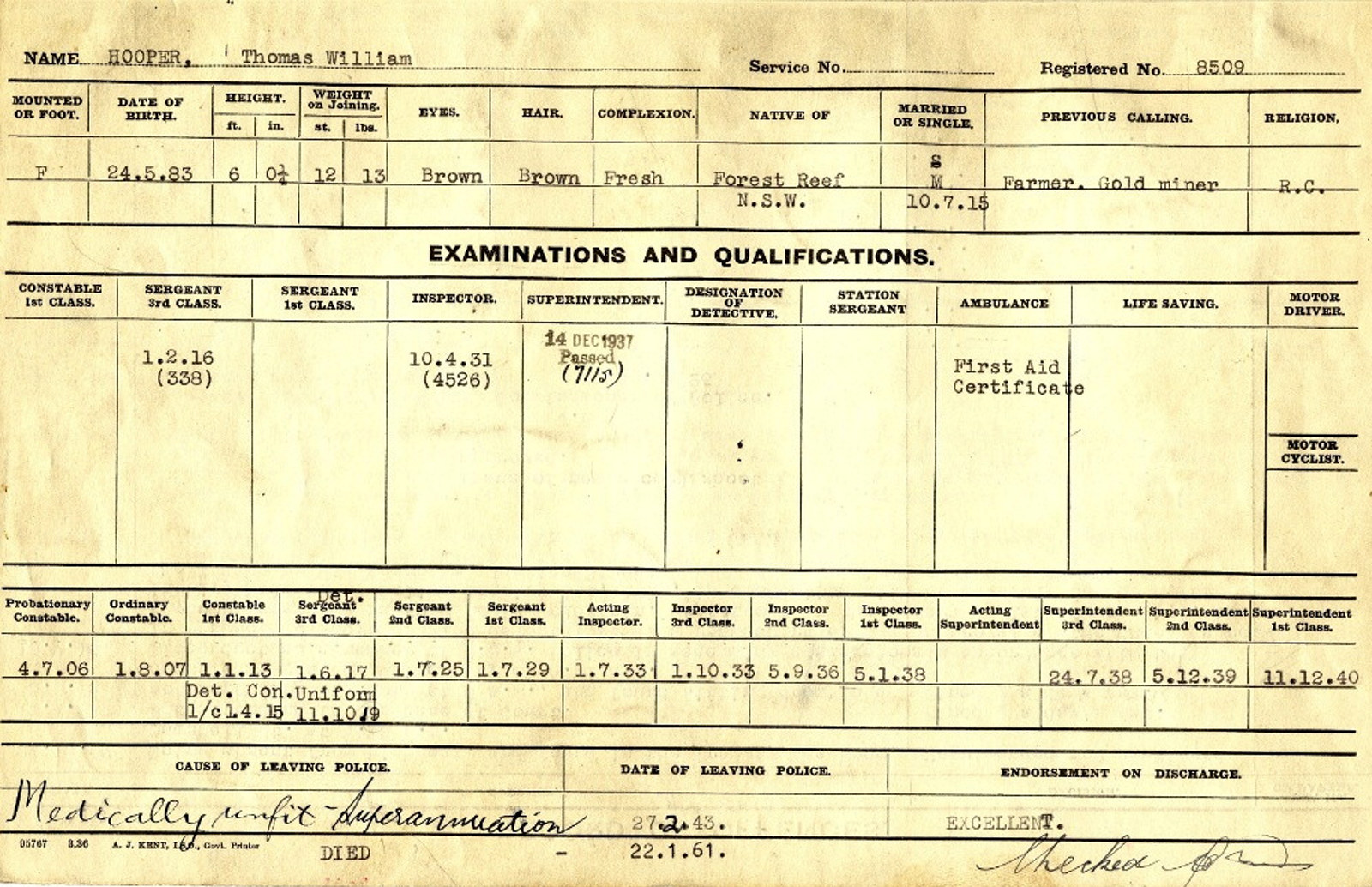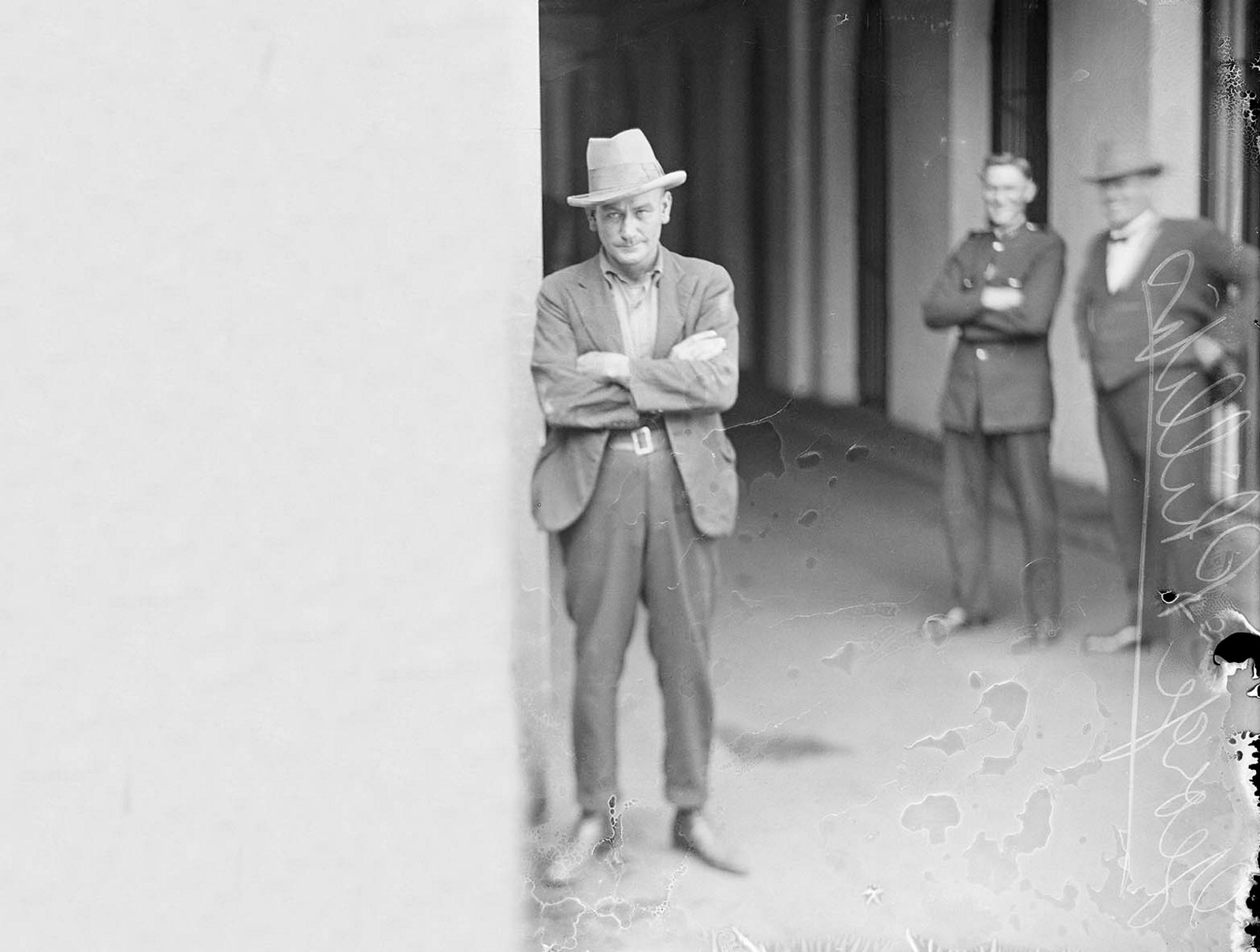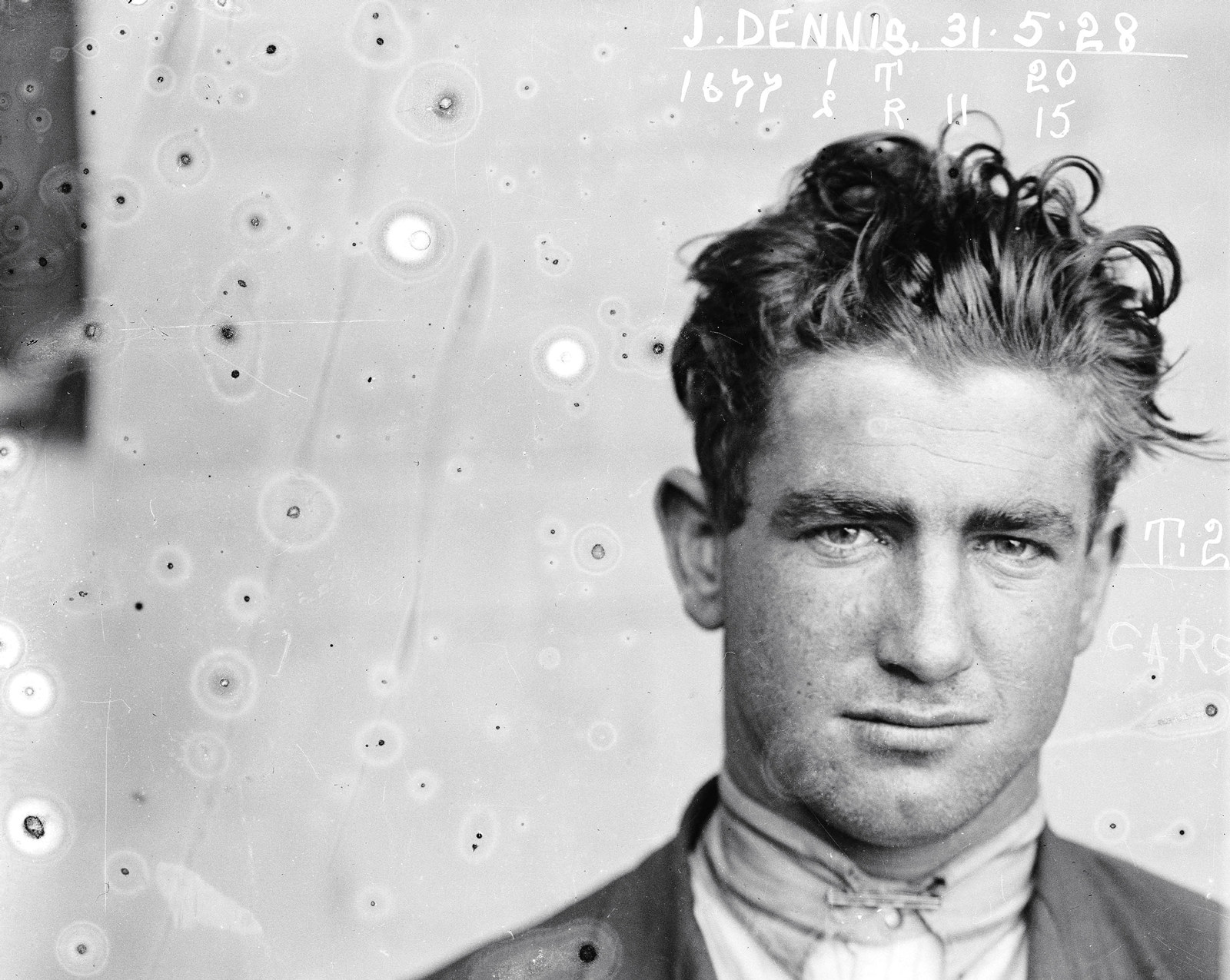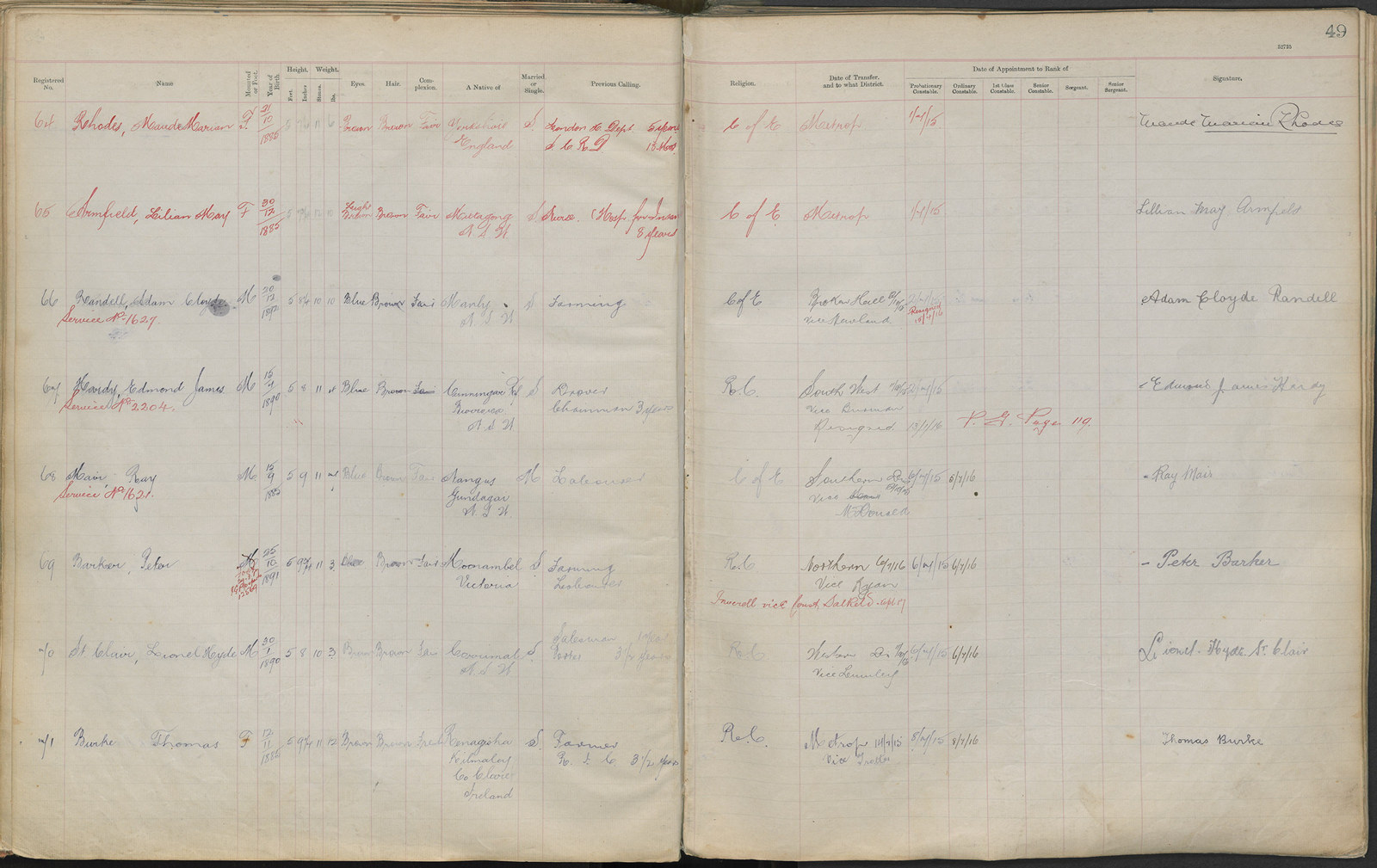First police women in Australia
Maude Marian Rhodes (1878-1956)
Police Woman / NSW Police Department
In 1915 the NSW Police Department advertised for two female special constable positions. Around 400 women applied, with the successful applicants being Maude Rhodes (an inspector for the State Children Relief Department) and Lillian Armfield (a nurse at Callan Park Mental Hospital). At the time there were 2,661 police officers in the NSW force. Rhodes and Armfield were not only the first women employed as police officers in NSW, but also the first in Australia.
Rhodes and Armfield’s employment was welcomed by many women’s organisations around Australia. Their duties involved dealing with women on both sides of the law, either detecting female offenders or protecting innocent women, girls and children. Wearing plain clothes, they policed Sydney’s streets, parks, railway stations and wharves, and had the powers to make arrests.
Job application records
Job description records
Employment Register
The 1915 employment register shows that Rhodes was the department’s first registered police woman, being number 64 and Armfield number 65. However, it was Armfield who had the longer career. She also had a role in Rhodes’ discharge in 1919: on 25 November Rhodes refused to obey a ‘legitimate order’ to go to Central railway station, given to her by ‘her superior officer – Special Constable LM Armfield’. Rhodes was given 14 days notice and discharged.
Maude Rhodes returned to the Children Relief Department in 1921, and became involved in the suffragette movement and the general push for women’s equality. She ran as a candidate in the Petersham municipal council election in 1937.
Published on
Related
Browse all
Police service cards
These cards are a rich source of information about police serving in NSW between 1913 and 1986

Underworld
Police
Sydney’s police force had lost many men on the battlefields of France during World War I and it took some time to rebuild. With resources stretched, police struggled to maintain law and order in an environment where criminal behaviour was evolving.

Underworld
NSW Police ‘Specials’
People in the Specials photographs were yet to have their day in court. The lack of signs that the person was in custody, such as handcuffs, meant the images could be shown to a witness during a criminal investigation without prejudicing the person against the suspect
